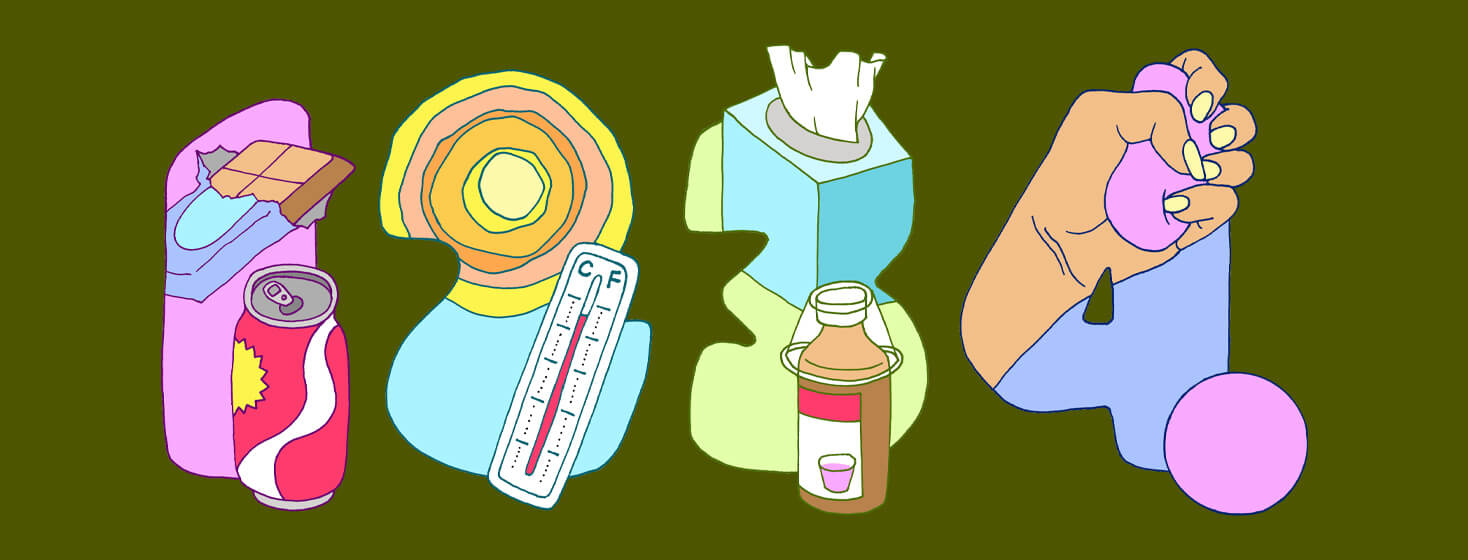How Trigger Stacking Affects My Migraines
While doing some reading on dog training, I came across an interesting term called trigger stacking. It refers to the process of small stressors adding up and overwhelming the dog, resulting in a large, sometimes adverse reaction. This, of course, switched my mind over into nerd mode. I thought about how small, unassuming stimuli or triggers could slowly build up and overwhelm my brain. My large, adverse reaction would be a migraine attack!
What is my migraine trigger threshold?
There are so many triggers or stimuli that affect people who live with migraine disease. Some of the more common ones are stress, sleep disruptions, hormone fluctuations, food or drink items, weather changes, dehydration, lights, sounds, smells, and medication overuse. I have been impacted by nearly all of these and others regularly for years. I think we all have a certain threshold that needs to be met before an attack can set in. In my experience, not all triggers carry the same weight. I think I handle and process stress well. However, the stress tracker on my watch constantly tells me differently!
Featured Forum
View all responsesHow does my trigger stacking work?
I liken my trigger stacking process to an old-fashioned balance scale. Every day I start off with a set counterbalance. This is my average personal threshold. My triggers/stressors start piling on the scale from the time I awaken each day. New daily persistent headache is almost always the first one. As my day progresses, others add to the pile. Having stacked appointments, I have to keep eating or not, caffeine or not. These all make a difference. They all carry a specific weight. In many cases, the weightiness of my stressors depends on how I perceive them impacting me. Some days interacting with my teen or other family members could come in as two pounds and, on other days, ten pounds. There is a great deal of variability in my controllable triggers.
How do I manage less controllable triggers?
There are other things that can be used to help manage triggers beyond my control. I think of these preventative measures as additional counterbalances. I can wear my hat and sunglasses to lighten the weight of a trigger like bright sunlight. Noise protection can dampen irritating noises or other unfriendly ambient sounds. Medication is a big counterbalance piece for me. I try my best to control what I can. It’s not a perfect system, and sometimes I get caught with my pants down! I’m always thinking, “an ounce of prevention is worth a pound of cure,” despite there being no cure for my conditions. Taking time to analyze how I experience my attacks and the triggers/stressors that feed them is how I cope with my chronic conditions. It may seem odd, but it works for me.
How do I manage triggers day-to-day?
The bottom line is that not all stressors have the same impact, and they vary from day to day. Mindfully considering what I experience each day does help me to mitigate trigger stacking and, by default, a large, adverse reaction. There are days my scale stays balanced, and then there are days when it shifts violently passed my threshold. Understanding my triggers/stressors and how to lighten their burden is a helpful tool in the effective management of my conditions.
How do your triggers weigh in on the balance scale of your daily life?

Join the conversation